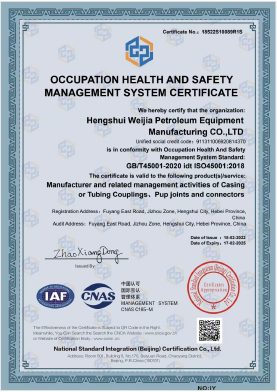- Afrikaans
- Albanian
- Amharic
- Arabic
- Armenian
- Azerbaijani
- Basque
- Belarusian
- Bengali
- Bosnian
- Bulgarian
- Catalan
- Cebuano
- Corsican
- Croatian
- Czech
- Danish
- Dutch
- English
- Esperanto
- Estonian
- Finnish
- French
- Frisian
- Galician
- Georgian
- German
- Greek
- Gujarati
- Haitian Creole
- hausa
- hawaiian
- Hebrew
- Hindi
- Miao
- Hungarian
- Icelandic
- igbo
- Indonesian
- irish
- Italian
- Japanese
- Javanese
- Kannada
- kazakh
- Khmer
- Rwandese
- Korean
- Kurdish
- Kyrgyz
- Lao
- Latin
- Latvian
- Lithuanian
- Luxembourgish
- Macedonian
- Malgashi
- Malay
- Malayalam
- Maltese
- Maori
- Marathi
- Mongolian
- Myanmar
- Nepali
- Norwegian
- Norwegian
- Occitan
- Pashto
- Persian
- Polish
- Portuguese
- Punjabi
- Romanian
- Russian
- Samoan
- Scottish Gaelic
- Serbian
- Sesotho
- Shona
- Sindhi
- Sinhala
- Slovak
- Slovenian
- Somali
- Spanish
- Sundanese
- Swahili
- Swedish
- Tagalog
- Tajik
- Tamil
- Tatar
- Telugu
- Thai
- Turkish
- Turkmen
- Ukrainian
- Urdu
- Uighur
- Uzbek
- Vietnamese
- Welsh
- Bantu
- Yiddish
- Yoruba
- Zulu
what are the differences between casing and tubing?
Differences Between Casing and Tubing in Oil and Gas Industry
In the oil and gas industry, two critical components of well construction are casing and tubing. While both are essential for the successful extraction of hydrocarbons, they serve distinct purposes and are made from different materials. Understanding these differences is crucial for engineers, geologists, and field operators involved in drilling operations.
1. Definition and Purpose
Casing refers to the series of pipes that are installed in the wellbore during drilling operations. These pipes are designed to stabilize the wellbore and protect it from external pressures, ensuring that the well remains secure throughout its life cycle. Casing also serves to isolate different geological formations, preventing the migration of fluids between them and protecting groundwater resources.
On the other hand, tubing is a smaller diameter pipe that runs inside the casing once the well has been drilled and cased. The primary purpose of tubing is to facilitate the flow of hydrocarbons from the reservoir to the surface. Tubing allows the safe and efficient transport of oil, gas, and produced water, ensuring that these materials can be extracted and processed appropriately.
2. Material and Design
Casing is typically constructed from thicker steel to withstand external pressures and potential collapse from the surrounding geological formations. It must resist corrosion and abrasion due to the harsh environment it is exposed to. Common types of casing include surface casing, intermediate casing, and production casing, each differing in thickness, diameter, and purpose according to the specific requirements of the wellbore.
In contrast, tubing is made from thinner steel and is designed for lower pressure conditions. It is crucial to ensure that tubing is resistant to corrosion and can handle the thermal stress from the produced fluids while maintaining a smooth inner surface to facilitate flow. The tubing is often smaller in diameter than the casing, allowing for optimal flow rates and reducing the risk of blockages.
what are the differences between casing and tubing?

3. Installation Process
The installation process for casing and tubing also differs significantly. Casing is set during the drilling process and usually requires cementing, a procedure where cement is pumped into the annular space between the casing and the wellbore wall. This cementing process provides additional support to the casing, secures it in place, and serves as a barrier against fluid migration.
Tubing, however, is installed after the drilling and casing processes. It is typically lowered into the wellbore after the completion of well construction and is connected to the components necessary for production, such as packers and safety valves. The tubing must be carefully sealed at the surface to prevent leaks during operation.
4. Removal and Maintenance
Maintaining and removing casing and tubing are also different. Casing is generally a permanent feature of the well. Once set, it is not expected to be removed unless the well is abandoned and must undergo decommissioning. This process is often complex, requiring specialized procedures to safely plug the well and remove the casing.
Conversely, tubing can be pulled and replaced at any point during the well’s lifecycle for maintenance or when there are issues such as wear or damage. This flexibility allows operators to optimize production and ensure the integrity of the well without the need for extensive workover operations.
Conclusion
In summary, casing and tubing play crucial but distinct roles in the oil and gas industry. Casing stabilizes the wellbore and protects it from external pressures, while tubing facilitates the flow of produced hydrocarbons to the surface. Their differences in material, design, installation, and maintenance highlight the complexity and engineering considerations involved in well construction. Understanding these differences is essential for optimizing production, ensuring safety, and protecting the environment throughout the lifecycle of oil and gas wells.
-
Tubing Pup Joints: Essential Components for Oil and Gas OperationsNewsJul.10,2025
-
Pup Joints: Essential Components for Reliable Drilling OperationsNewsJul.10,2025
-
Pipe Couplings: Connecting Your World EfficientlyNewsJul.10,2025
-
Mastering Oilfield Operations with Quality Tubing and CasingNewsJul.10,2025
-
High-Quality Casing Couplings for Every NeedNewsJul.10,2025
-
Boost Your Drilling Efficiency with Premium Crossover Tools & Seating NipplesNewsJul.10,2025







